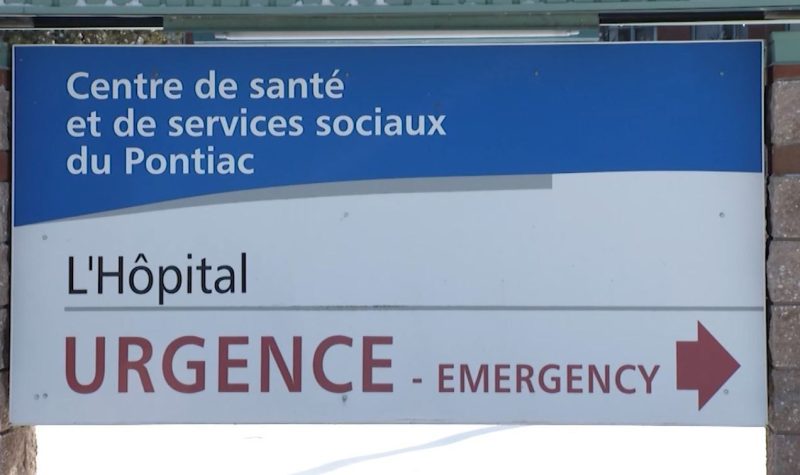L’Institut de recherche et d’informations socioéconomiques (IRIS) published a study on Nov. 4 highlighting the disparities in health care services between the jurisdictions in the Outaouais.
This latest publication builds on a previous study that IRIS published in 2018 which showed that health care in the Outaouais is underfunded compared to the rest of the province. The earlier study was officially recognized the following year by the National Assembly.
One of the study’s authors, Bertrand Schepper, told CHIP 101.9 that the purpose of this study was to build on their previous findings and dig into the disparities within the different regions of the Outaouais:
He said that they started by looking at the socioeconomic status and other demographic factors as well, concluding that the two poorest, most remote regions, Pontiac and Vallée-de-la-Gatineau, have much worse outcomes than the rest. These are also the areas with the largest proportion of residents who identify as Indigenous.
Demographic differences
The Pontiac and Vallée-de-la-Gatineau MRCs have the smallest populations in the Outaouais (14,134 and 20,666 respectively) and are also by far the largest geographically. These rural areas have the lowest disposable income per capita ($23,879 and $24,374 respectively). Pontiac men have the lowest life expectancy in the Outaouais at 77.1 per cent, far below Pontiac women (82 per cent) and the overall Quebec average (82.8 per cent).
Additionally, the study examines how the regions score on the material and social deprivation index, a metric created by Quebec’s National Institute of Public Health (INSPQ) using Canadian census data. While Pontiac and Vallée-de-la-Gatineau ranked poorly in terms of material deprivation (things like income), they ranked relatively well on the social deprivation index, which means these areas have lower rates of people living alone, single parents, divorce, etc. The average level of employment and education is lower in these areas as well, which is linked to material and social deprivation.
The study points out that in the Pontiac service area (which also encompasses the Municipality of Pontiac) two thirds of the residents are overweight and the number of smokers is well above the provincial average. The prevalence of diabetes, high blood pressure and arthritis is also higher than the provincial average.
Right next door is the MRC des Collines, where more than a quarter of workers are employed by the federal public service and residents have a life expectancy and income that tops the provincial average, as well as some of the best scores on the deprivation index.
Emergency Services
One of the primary findings of the study was that due to a lack of access to family doctors, the region’s emergency rooms are seeing more and more patients requiring non-urgent care. While the Pontiac had the highest proportion of general practitioners in the region, the emergency room at the Pontiac Hospital had the highest rate of patients assessed non-urgent, with 8,794 of the 9,966 (88.2 per cent) visits in 2020 being assessed as the lowest triage priority:
The study points out that just because a patient is registered with a family doctor doesn’t mean that they can access them easily, and when that happens they can end up in the region’s emergency departments. The study states that emergency departments are filling a gap in service left by the lack of access to things like walk-in clinics or family physicians.
Mental health
The government of Quebec estimates that nearly 20 per cent of the population will be affected by mental illness during their lifetime. Schepper said that the lack of access to services like social workers or family doctors had a large impact on mental health care in the rural MRCs. The majority of mental health interventions are centralized in Gatineau at the Pierre Janet Hospital, which specializes in this kind of medicine. Schepper said that more services should be made adapted to the needs in rural areas:
Solutions
Schepper said that the CAQ government’s plans to build a new hospital in the region wouldn’t be much help, as it does nothing to address the rural/urban disparities or the shortage of doctors and nurses. He said that more needs to be invested in front-line services and the retention of workers:
Quick stats
Some of the disparities between the rural portions of the Outaouais and the rest of the province, at a glance:
- Life expectancy is 79.4 years in the Pontiac and 79.3 years in Vallée-de-la-Gatineau, compared to the Quebec average of 82.8 years. Pontiac men have the lowest life expectancy in the entire Outaouais, at 77.1 years.
- The Gatineau Hospital accounts for 96.6 per cent of maternity service users while 72 per cent of the Outaouais population lives in Gatineau.
- Quebec has 2.51 doctors per thousand inhabitants, compared to only 1.54 in the Outaouais. In the Pontiac, the proportion of general practitioners was the highest in Outaouais (2.11 per thousand), but the proportion of specialists was much lower (0.49 per thousand) compared to the provincial averages of 1.26 and 1.25 respectively.
- The ratio of nurses in Quebec is 7.34 per thousand inhabitants, but 5 per thousand in the Outaouais.
- The emergency room at the Pontiac Hospital had the highest proportion of visits from low triage priority (P4 and 5) patients in the entire Outaouais, at 88 per cent, compared to the regional average of 61.7 per cent and provincial average of 53.5 per cent. Put another way, this means that 8,794 of the 9,966 visits to the hospital’s emergency room in 2020 were for non-urgent care.
- Wait times in Outaouais emergency rooms are much longer than the Quebec average: 3 hr. 14 min. at the Hull Hospital, 3 hr. 56 min. at the Gatineau Hospital, 3 hr. 10 min. on average for the Outaouais, compared to the provincial average of 2 hr. 23 min. The Pontiac Hospital had the lowest average wait time in the region, at 2 hours. (Stats from 2020)


